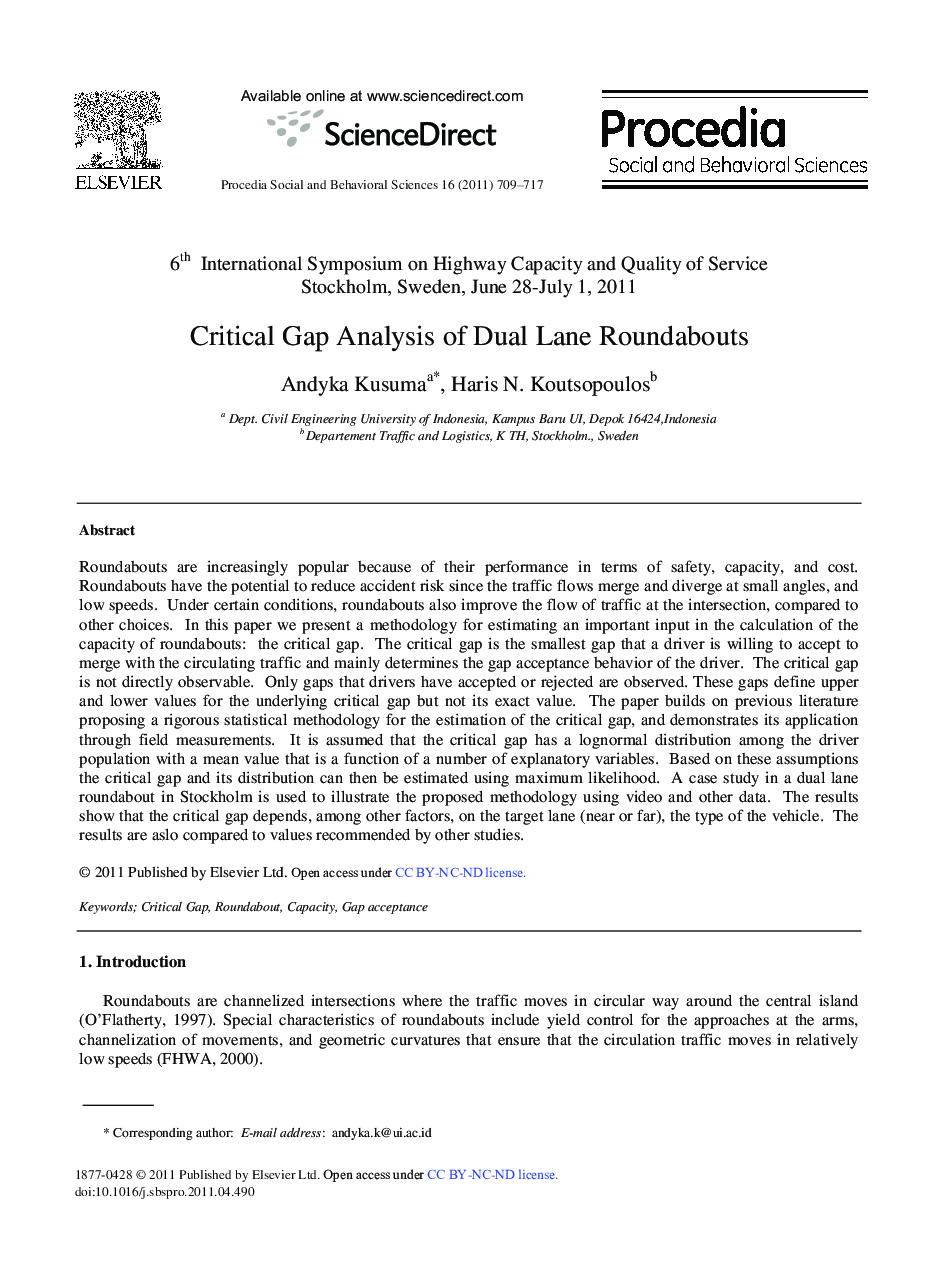| کد مقاله | کد نشریه | سال انتشار | مقاله انگلیسی | نسخه تمام متن |
|---|---|---|---|---|
| 1124201 | 1488543 | 2011 | 9 صفحه PDF | دانلود رایگان |

Roundabouts are increasingly popular because of their performance in terms of safety, capacity, and cost. Roundabouts have the potential to reduce accident risk since the traffic flows merge and diverge at small angles, and low speeds. Under certain conditions, roundabouts also improve the flow of traffic at the intersection, compared to other choices. In this paper we present a methodology for estimating an important input in the calculation of the capacity of roundabouts: the critical gap. The critical gap is the smallest gap that a driver is willing to accept to merge with the circulating traffic and mainly determines the gap acceptance behavior of the driver. The critical gap is not directly observable. Only gaps that drivers have accepted or rejected are observed. These gaps define upper and lower values for the underlying critical gap but not its exact value. The paper builds on previous literature proposing a rigorous statistical methodology for the estimation of the critical gap, and demonstrates its applicationthrough field measurements. It is assumed that the critical gap has a lognormal distribution among the driver population with a mean value that is a function of a number of explanatory variables. Based on these assumptions the critical gap and its distribution can then be estimated using maximum likelihood. A case study in a dual lane roundabout in Stockholm is used to illustrate the proposed methodology using video and other data. The results show that the critical gap depends, among other factors, on the target lane (near or far), the type of the vehicle. The results are aslo compared to values recommended by other studies. © 2011 Published by Elsevier Ltd.
Journal: Procedia - Social and Behavioral Sciences - Volume 16, 2011, Pages 709-717